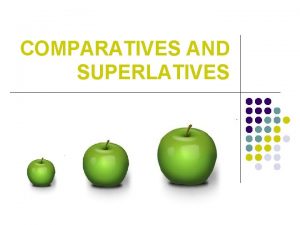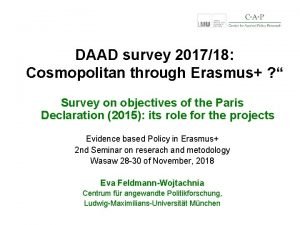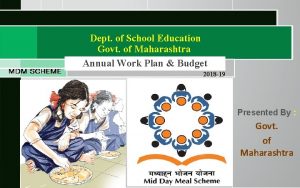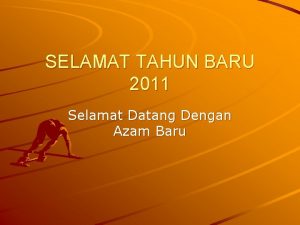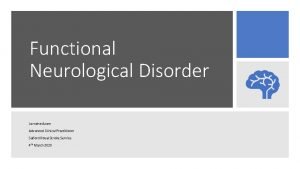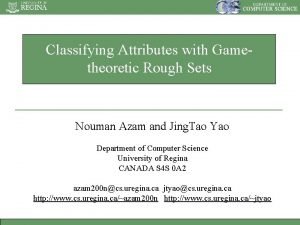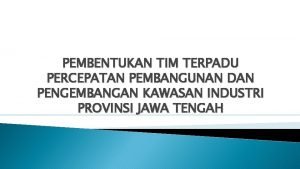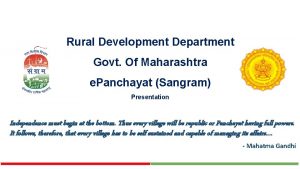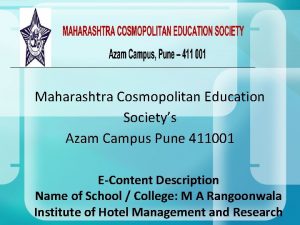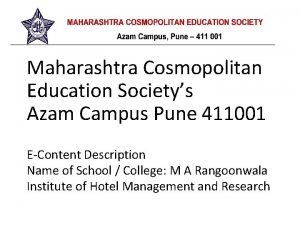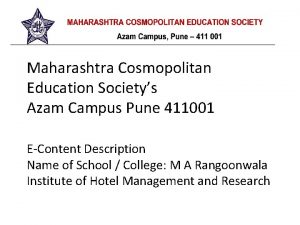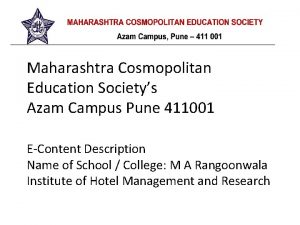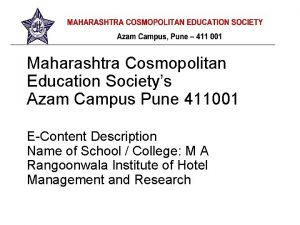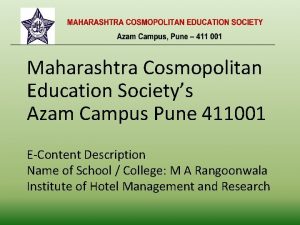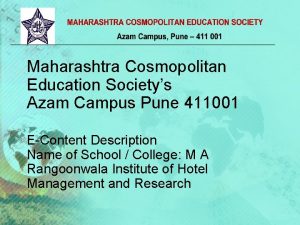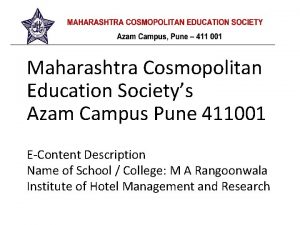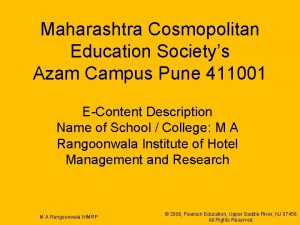Maharashtra Cosmopolitan Education Societys Azam Campus Pune 411001












- Slides: 12

Maharashtra Cosmopolitan Education Society’s Azam Campus Pune 411001 E-Content Description Name of School / College: M A Rangoonwala Institute of Hotel Management and Research © 2010, Educational Institute

Name and Designation of content creator /Producer Title of E content Theory/practical Title and No of Module Title and code of Paper Assoc. Prof Imran Sayyed Broad Subject Course Class Semester University /Board Date of Content Creation Name of Reviewer HOD/Principal © 2010, Educational Institute Engineering BSc. HS SY Third SPPU 9 Jan 2020 Imran Sayyed Safety, Security Theory Safety, Security The Science of Hotel Engineering Subject Code : HS 206 M A Rangoonwala IHMRP

Competencies for Safety, Security, and Risk Management 1. Discuss the essential role of security. 2. Describe the elements of a comprehensive security program. 3. Summarize safety issues and activities at. 4. Explain how Hotels can effectively manage a crisis. 5. Describe how Hotels can manage the various risks they face and control their insurance costs. © 2010, Educational Institute 3

Safety and Security Issues (continued) • • • Alarm systems Communications systems Computer security Inventory security Adequate security staffing Pre-employment screening and employee bonding and training • Drugs and addiction • Handling intoxicated patrons • Handling disturbances © 2010, Educational Institute (continued) 4

Training Topics for Security Personnel • • Safety guidelines Crowd and traffic control; guarding; maintaining order Accident prevention and first aid Fire prevention; fire evacuation Handling bomb and terrorist threats Procedures for dealing with accidents and emergencies Preventing persons from disrupting lawful meetings held in the resort • Dealing with intoxicated guests and seeing to their safety © 2010, Educational Institute (continued) 5

Training Topics for Security Personnel (continued) • Fostering good public relations with guests • Communicating with local authorities on security checks • Inspecting physical barriers and mechanical and electrical equipment • Monitoring electronic security systems • Ensuring that alarms are in working order © 2010, Educational Institute 6

Ways Employees Can Assist in Security Matters • Being alert to and reporting suspicious activities, situations, or persons anywhere on the property. • Reporting on any drug paraphernalia or other suspicious items that may be in plain view when cleaning or making repairs in a guestroom. • Reporting any unsafe conditions that merit immediate attention and correction. • Alerting security when checking in guests with large but empty suitcases. © 2010, Educational Institute (continued) 7

Resort/Hotel Safety Facts 1. Accidents do not normally originate from fires, floods, or earthquakes but from everyday occurrences such as lifting a carton incorrectly or straining to stop a fall. 2. Five working areas present the greatest hazards: food preparation, food service, stewarding (handling dishes and glassware and cleaning), receiving, and guestroom housekeeping. 3. The vast majority of all accidents (85 percent) are caused by unsafe behavior rather than unsafe working conditions. © 2010, Educational Institute (continued) 8

Resort/Hotel Safety Facts (continued) 4. Good safety habits are learned behavior; they are not simply common sense. The majority of accidents occur in an employee’s first six months of employment. 5. Large hotels usually incur more losses than small hotels, partly because of the higher rate of employee turnover in large hotels. 6. For most employees, their immediate supervisor is the originator of good and bad safety habits. © 2010, Educational Institute 9

Sample Resort/Hotel Safety Program 1. Development of a fire brigade 2. Formation of a safety and security committee 3. Development of emergency procedures 4. Regular hotel inspections 5. Investigation of accidents 6. Establishment of a medical/first aid program 7. Implementation of safety training programs 8. Establishment of written objectives for loss control 9. Implementation of claims-evaluation meetings 10. The filing of essential reports © 2010, Educational Institute 10

Four Steps in the Risk Management Process 1. 2. 3. 4. © 2010, Educational Institute Risk identification Risk measurement and evaluation Risk reduction or elimination Risk coverage—how much risk to accept and how much to insure 11

© 2010, Educational Institute 12
